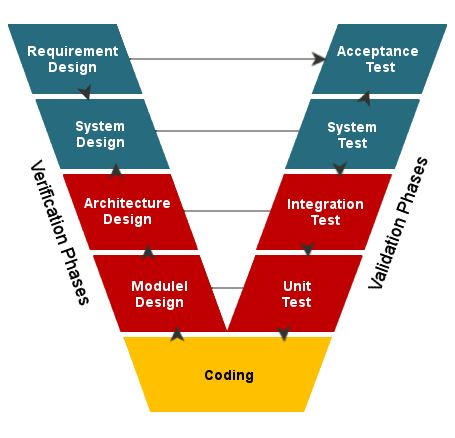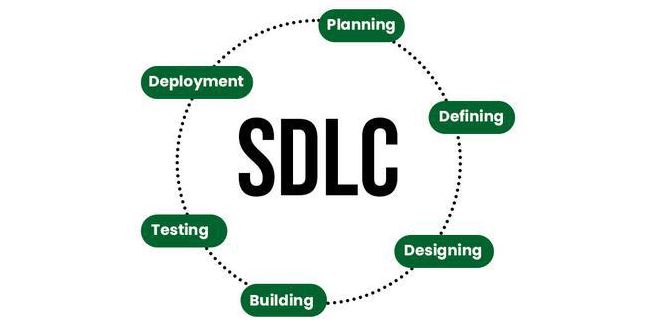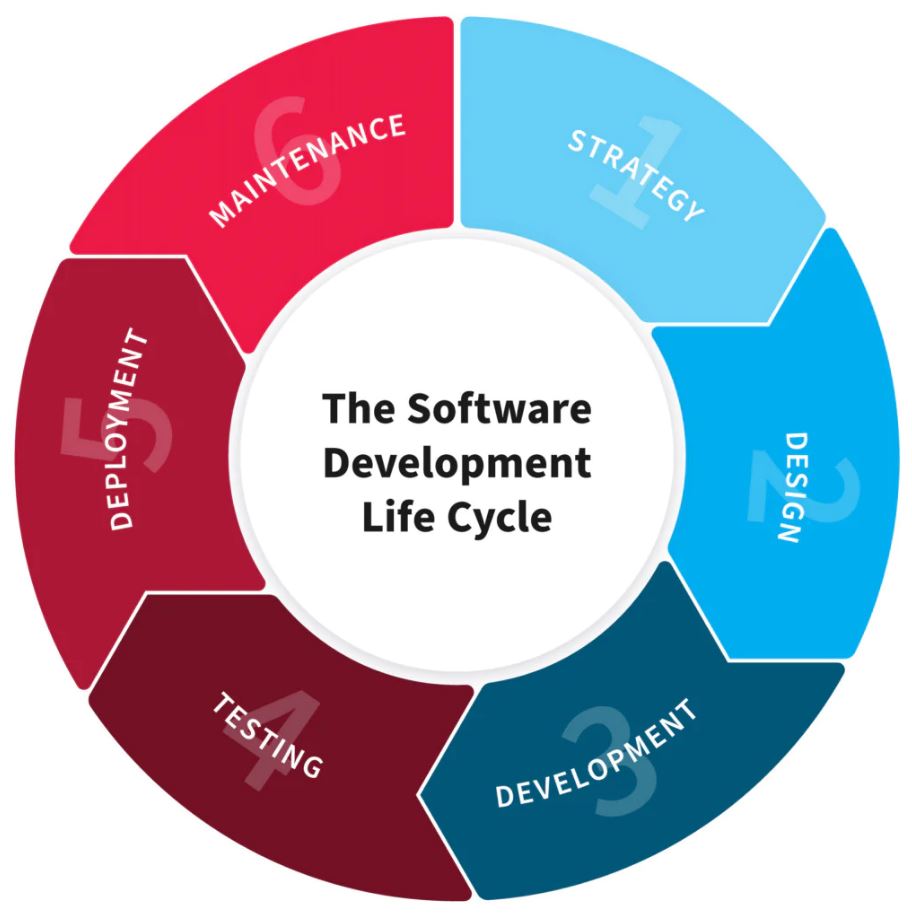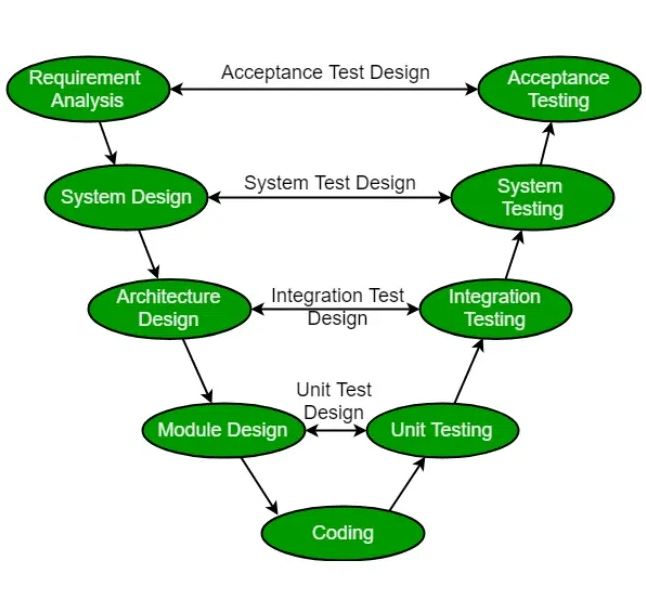The Importance of Validation Software Development Lifecycle
The validation software development lifecycle (SDLC) is a structured framework that guides the development of software applications through various stages, including planning, design, coding, testing, and deployment. Each phase is critical to the overall success of the project, as it ensures that the final product meets user requirements and functions correctly. Among the key processes within the SDLC are Verification and Validation (V&V), which play essential roles in ensuring software quality and reliability.
Validation in the software development lifecycle is particularly crucial as it focuses on assessing whether the software product meets the intended needs and requirements of users. While verification checks if the software is built according to specifications, validation confirms that it fulfills its intended purpose in real-world scenarios. This distinction highlights the complementary nature of V&V processes, emphasizing their importance in delivering a high-quality software product.
The significance of V&V cannot be overstated; they help identify defects and inconsistencies early in the development process. By conducting thorough validation activities, teams can ensure that the software functions as expected and delivers a satisfactory user experience. This proactive approach minimizes the risk of costly errors and rework, ultimately leading to increased efficiency and user satisfaction.
In summary, validation within the software development lifecycle is a vital component that ensures software products not only meet technical specifications but also align with user expectations. By integrating V&V practices throughout the SDLC, organizations can enhance the overall quality and reliability of their software, fostering a more successful development process and improving user trust in the final product.
What is Verification?
Definition and Purpose of Verification in Software Development
Verification is a critical process in software development that ensures the product meets the specified requirements at each stage of the validation software development lifecycle (SDLC). The primary purpose of verification is to evaluate whether the software system complies with the predefined specifications and requirements set forth during the planning and design phases. This process aims to identify any defects or deviations from the specifications before the software is released, thus ensuring that the product is built correctly.
Verification is essential because it helps reduce the risk of errors and defects that could emerge later in the development process or, worse, in the production environment. By catching issues early, organizations can save time and resources, leading to a more efficient development cycle and a higher-quality final product.
Explanation of How Verification is Integrated into Each Stage of the SDLC
Verification is integrated into each stage of the SDLC, providing a systematic approach to ensuring quality.
- Requirements Gathering: During this initial phase, verification involves reviewing requirements to confirm they are clear, complete, and testable. This helps establish a solid foundation for the project.
- Design Phase: Verification in this stage includes evaluating design specifications to ensure they align with the requirements. Design reviews and inspections help identify any inconsistencies or gaps before development begins.
- Implementation (Coding): In the coding phase, verification takes the form of code reviews and static analysis. These activities help identify coding errors and ensure adherence to coding standards.
- Testing Phase: Verification continues during testing by validating that each component meets its specifications. This includes unit testing, integration testing, and system testing to ensure the software performs as intended.
- Deployment and Maintenance: Verification does not stop after deployment. Continuous verification, such as monitoring and audits, ensures that the software remains compliant with its specifications throughout its lifecycle.
Description of Verification as Static Testing
Verification is primarily a static testing process, meaning it involves reviewing and analyzing the software’s documentation and code without executing the program. This type of testing focuses on identifying defects and inconsistencies in the requirements, design, and code early in the development process.
Static testing methods include:
- Reviews and Inspections: These involve formal examinations of documents, design specifications, and code by peers or stakeholders to identify errors and areas for improvement.
- Static Code Analysis: Automated tools can analyze the source code for coding standards violations, potential bugs, and security vulnerabilities without running the program.
- Walkthroughs: In this collaborative approach, team members present the development artifacts to others, facilitating discussion and feedback on the work.
These techniques help ensure that the software is developed according to its specifications and adheres to industry standards.
Key Techniques Used in Verification
Several techniques are commonly used in verification to ensure software quality:
- Requirements Reviews: Regular reviews of requirements documents help confirm that they are complete, unambiguous, and testable.
- Design Reviews: Evaluating design documents allows teams to identify potential issues early in the development process.
- Code Reviews: Conducting peer reviews of the source code enables the identification of bugs and adherence to coding standards.
- Static Analysis Tools: Using automated tools to analyze code helps detect potential errors and security vulnerabilities without executing the software.
By employing these techniques, organizations can enhance the effectiveness of their verification efforts and ensure that their software products meet quality standards.
What is Validation?
Definition and Goals of Validation in Software Development
Validation is the process of evaluating the software product to ensure it meets user needs and requirements. Unlike verification, which focuses on whether the product is built correctly according to specifications, validation assesses whether the right product is being developed for the users. The primary goal of validation is to confirm that the software fulfills its intended purpose in real-world scenarios, providing the expected functionality and benefits to its users.
Overview of Dynamic Testing and How Validation Complements Verification
Validation primarily involves dynamic testing, where the software is executed in various scenarios to assess its performance and functionality. This process includes a range of testing activities, such as:
- Functional Testing: Ensures that the software performs its intended functions as specified in the requirements.
- User Acceptance Testing (UAT): Conducted with end-users to confirm that the software meets their needs and expectations.
- Performance Testing: Evaluates the software’s responsiveness and stability under expected load conditions.
Validation complements verification by ensuring that the product not only meets technical specifications but also delivers a satisfying user experience. While verification helps catch defects early in the development process, validation focuses on the final product’s usability and effectiveness.
Importance of Validation in Meeting User Needs and Real-World Applicability
The importance of validation cannot be overstated, as it directly impacts user satisfaction and the software’s success in the market. By validating the software against real-world scenarios and user requirements, development teams can identify and address potential issues before the product is released. This proactive approach minimizes the risk of post-launch failures and enhances the overall quality of the software.
In conclusion, both verification and validation are essential processes in the software development lifecycle, working together to ensure that the final product is not only built correctly but also meets the users’ needs and expectations. By incorporating effective verification and validation practices, organizations can enhance software quality, reduce risks, and improve user satisfaction.
Roles of Verification and Validation in SDLC
Verification and Validation (V&V) play pivotal roles in the validation software development lifecycle (SDLC), ensuring that software products not only meet technical specifications but also fulfill user needs. This section delves into the various roles of V&V within the SDLC, focusing on traceability analysis, interface analysis, criticality analysis, and hazard and risk analysis.
Traceability Analysis
Definition and Importance of Traceability in V&V
Traceability analysis refers to the ability to link requirements throughout the SDLC, ensuring that each requirement is addressed in the development process. It establishes a relationship between initial requirements and subsequent work products, such as design documents, code, and test cases. The importance of traceability lies in its ability to:
- Ensure Requirement Coverage: Confirm that every requirement is implemented and tested, reducing the risk of missing functionality.
- Facilitate Change Management: Enable teams to assess the impact of changes in requirements on various components of the software.
- Enhance Communication: Provide a clear understanding of the relationship between requirements and design, promoting collaboration among stakeholders.
Steps Involved in Conducting Traceability Analysis
- Requirement Identification: Clearly define and document all software requirements during the requirements gathering phase.
- Mapping Requirements: Create a traceability matrix that maps each requirement to corresponding design elements, code modules, and test cases.
- Regular Updates: Continuously update the traceability matrix throughout the SDLC to reflect any changes in requirements or design.
- Verification Checks: Conduct regular reviews of the traceability matrix to ensure all requirements are adequately covered in the development process.
Interface Analysis
Role of Interface Analysis in Ensuring Effective Component Interaction
Interface analysis is crucial in verifying that different software components interact effectively. It involves examining the interfaces between modules, systems, and users to ensure they meet specified requirements. The role of interface analysis includes:
- Identifying Dependencies: Understanding how different components depend on each other and ensuring that these dependencies are well-defined.
- Ensuring Compatibility: Verifying that the interfaces between hardware, software, and users operate smoothly and without errors.
- Enhancing Usability: Ensuring that user interfaces are intuitive and provide a seamless user experience.
Detailed Process of Conducting Interface Analysis
- Interface Specification Review: Analyze the interface specifications to ensure they are clear and comprehensive.
- Dependency Mapping: Identify and document dependencies between various components and their interfaces.
- Interoperability Testing: Conduct tests to verify that components interact correctly according to the specifications.
- User Feedback: Gather feedback from users to assess the effectiveness and usability of the interfaces.
Criticality Analysis
Explanation of Criticality in Software Requirements
Criticality analysis involves assessing the importance of each software requirement based on its impact on the system’s overall functionality and performance. Requirements deemed critical must be prioritized to ensure they are addressed adequately during development. Understanding criticality helps teams focus their efforts on features that are vital to the software’s success.
Procedure for Performing Criticality Analysis Throughout the SDLC
- Requirement Categorization: Classify requirements as critical, major, or minor based on their impact on the system.
- Control Flow Diagram Construction: Create control flow diagrams (CFDs) to visualize the relationships between requirements and system functions.
- Critical Function Traceability: Trace critical functions back to their respective requirements to ensure they are adequately addressed in design and testing.
- Regular Review: Continuously review and update the criticality analysis as new requirements are introduced or existing ones change.
Hazard and Risk Analysis
Importance of Hazard and Risk Analysis in Early Phases of SDLC
Hazard and risk analysis involves identifying potential hazards and assessing their impact on the software product. Conducting this analysis during the early phases of the SDLC is essential for several reasons:
- Early Detection of Risks: Identifying potential risks early allows teams to implement mitigation strategies before they become significant issues.
- Enhanced Safety: Ensuring that potential hazards are addressed leads to safer software products, particularly in critical systems such as healthcare, automotive, and aerospace.
- Compliance with Standards: Many industries require adherence to specific safety standards that necessitate thorough risk analysis.
How Hazard and Risk Analysis Integrates with V&V to Enhance Software Safety and Reliability
- Risk Identification: Identify and document potential hazards and risks associated with software requirements and design.
- Risk Assessment: Evaluate the likelihood and impact of identified risks, categorizing them for prioritization.
- Integration with Verification: Use risk assessments to guide verification efforts, ensuring that high-risk areas receive appropriate attention during testing.
- Integration with Validation: Validate that the software meets safety requirements and addresses identified risks, ensuring it is safe for user deployment.
In summary, verification and validation processes play a fundamental role in the SDLC, with specific techniques like traceability analysis, interface analysis, criticality analysis, and hazard and risk analysis enhancing software quality, reliability, and user satisfaction. By implementing these analyses, organizations can ensure that their software products meet both technical specifications and user expectations, ultimately leading to successful software deployment.
In the realm of software development, the roles of verification and validation (V&V) are critical components of the validation software development lifecycle (SDLC). Verification ensures that the software is built according to specified requirements, while validation confirms that the final product meets user needs and performs effectively in real-world scenarios. Together, these processes form a comprehensive framework that enhances the quality and reliability of software applications.
Effective V&V contributes significantly to higher user satisfaction by minimizing the risk of defects and ensuring that software products function as intended. By implementing rigorous validation strategies throughout the software development lifecycle, organizations can identify and rectify issues early, reducing the likelihood of costly fixes post-deployment. This proactive approach not only fosters confidence in the software but also aligns the final product with user expectations, leading to a more satisfying user experience.
Moreover, successful software deployment relies heavily on thorough V&V practices. When verification and validation are integrated into each phase of the SDLC, they help establish a robust quality assurance framework. This framework not only mitigates risks but also enhances the overall effectiveness of the development process. As a result, software products are more likely to meet compliance standards, perform reliably, and deliver the intended value to users.
In conclusion, the importance of validation in the software development lifecycle cannot be overstated. By prioritizing verification and validation, organizations can ensure that their software products are not only technically sound but also user-centric, ultimately leading to increased satisfaction and successful deployment in a competitive market.
News -Essential Types of Questions to Ask for Beta Testing Software Development
Top Software Development Job Recruiters Finding Your Perfect Fit
Top Software Developer Job Recruiters to Help You Find the Best Talent
Comprehensive Product Lifecycle Management for Software Development for LLM-Based Products
Exploring Custom Software Development Green Bay A Guide to the Top Local Companies
Maximizing Efficiency with Co-Development Software A Comprehensive Guide
The Fallout of Anjali Arora’s MMS Viral Video A Comprehensive Analysis




